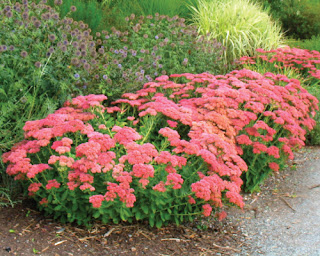Many homeowners are obsessed with lawns. Although originally created by European aristocrats in the 17th century as status symbols, today’s lawns are a symbol of the American dream. Unfortunately, they also can be a source of unnecessary burden for homeowners, which has led to a recent, and growing, interest in alternatives to grass in yards. If you are looking to cut down on your grass while still maintaining a luscious green landscape, here are some ideas:
Clover
to inter seed lawns, the most popular is Dutch White Clover because it is relatively low growing, tolerates close mowing, and out-competes other foreign weeds. Just after the snow is melted, clover shows its fresh green, and it stays this way through all the summer drought into the late fall until the first snowfalls.
Ground Covers
Sprawling across the ground, they are providing an elegant touch to your garden. Ground covers don't grow tall, eliminating the need to mow, but providing the perfect alternative to grass. Many of them are nicely blooming in light hues or their leaves are in lime, grey or silver-blue shades.
.
Creeping Thyme
It is excellent planted as a lawn substitute in sunny areas or among stepping stones and even as pavers to create a living patio. Creeping thyme builds dense carpets that can even withstand some foot traffic. It takes one year to get established and then begins to spread in its second season.
.
Ornamental Grasses
Most of them like sun, are drought-tolerant and grow from 3 inches to 30 inches or even higher. Garden owners can choose from a variety of colors and types and styles, from blue fescue grass to Japanese forest grass to Muhlenbergia or the red-blooming fountain grass to pampas grass. They look best when grown in groups of the same variety.
.
Evergreen Moss
For shady or half-shady parts of the garden or underneath trees (where they grow anyway) moss is a lovely substitute to lawns. Carpet moss or fern moss would prefer a damp, cool environment to grow in. They can be planted usually from hardy zone 3-8.
.
Native Perennial Beds
These important plant species provide nectar, pollen, and seeds that serve as food for native butterflies and birds. Match plants to your site and to the soil. Design for a succession of blooms, such as early spring flowers and shrubs, then summer blooms such as roses, lavender, irises, salvia, and yarrow. For late summer and fall chose purple coneflowers and sedum autumn joy. Don’t forget heuchera with its colorful leaves that are showing off almost all year. Or just plant all kinds of blooming shrubs for year-round colors! Mulch the beds well and you never have to weed again. The only “chore” will be the cutting off spent flowers, immediately after blooming.
Conclusion
Compared to lawns there is almost no maintenance or future costs involved in all these lawn replacements. Forget about lawn mowing fees, lawnmowers and snippers, weed digging, fertilizers and god-forbid pesticide poisons. PLUS: it looks much better and gives your property curb (or back yard) appeal. And you don’t need to change the whole lawn in one step. Start small and continue year-for-year with a bit more garden design. Enjoy!
.
<><><><><>














